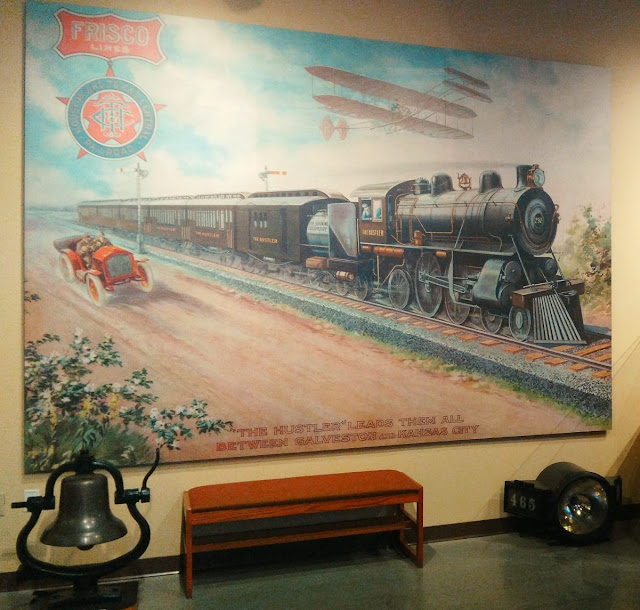Frisco is one of the many cities in the Dallas Fort-Worth Area and is one the fastest growing ones. We recently visited the Frisco Heritage Museum and having gone through some of the artifacts over there followed by some reading over internet could well appreciate the fact that Frisco's history dates back more than 150 years. And railways has got a central to play in this history.
The early settlers came down following the Preston Trail, current Preston Road, and settled in the area around 1840s. The first community to be formed was called Lebanon as some of the settlers had their roads in Lebanon, Tennessee. In 1902 a line of the St. Louis - San Francisco railroad was built through the area and they had a watering stop for the steam engine around 4 miles west of where the community was setup initially. Many of the Lebanon community moved to around this new location. The dwellers of this new town called it Frisco City after the name of railway line; later shortened to Frisco. The city even derives it's current coat of arms from the logo of St. Louis - San Francisco railroad. The Frisco Heritage Museum preserves a part of that history. It is a nice small museum where you could spend couple of hours browsing through Frisco's history.
Below is one of the steam engines from the erstwhile Frisco railroad.
For the first 50 years of Frisco history, cotton was the town's economic engine. Farmers and their families picked cotton by hand in early days and drove it into one of the town's several gins in mule-drawn wagons. Gins lined the downtown streets and the Frisco trains hailed tons of Frisco cotton.
By the 1980s, the development began to shift land values away from farming and in 1998 the last two Frisco families who farmed their own land (the Cobbs and the Newmans) shutdown operations.
In 2006 for the first time no cotton was grown in Collin or Denton county.
Below are some of the items showcased at the Frisco Heritage Museum.
The Lebanon Baptist Church (picture below) was organised on September 28, 1879 with 19 members who met in the one room school house. The first pastor was Rev. J.B. Kimborough. In March, 1860 the U.S. Postal Service granted a post office to Lebanon, Texas. The church was built in 1883. The church continued to hold service in this building till 2003 after which the members donated it to the Frisco Heritage Museum.
A view of the church and adjacent house from the second floor of the Heritage Museum.
This mural titled 'Human Threads' (pictures below) extends the length of the east wall.of the Heritage Museum. It was painted in 2008 by artist Janice Hart Melito. The panorama depicts an older woman reading the history of Frisco to a young listener. As they read the story above and around them, the mural takes the viewer on a visual story. It begins with the earliest settlers in our area and ends with the coming of the St. Louis - San Francisco railroad to what become the Frisco as we know today.
This two story house (picture below) was built in 1895 by Nannie Chambers Crozier in Lebanon (picture below). Nannie Chambers moved to Collin county with her family in 1873 and three years later married John Crozier. In 1902 when many Lebanon residents chose to move to the new Frisco community, Mrs. Crozier chose to stay and remained there till 1938. The house was purchased by John and Donna Sickles in 1977 and was renovated by them. The Crozier - Sickles was donated and moved to Frisco Heritage Center in 2006.
Below are some of the artifacts from the museum. Check you if you can match them with the picture following:
- Kodak Instamatic 404
- Kodak Instamatic 104
- Kodak Instamatic X-15
- Pocket Instamatic Disc 40, Kodak, 1983
- Polaroid One Step Camera 600, 1980s
- Kodak Disc 4100 1984-1987

Again, match the objects listed with the picture following:
- Kodak Duaflex II with Flash , 1947-1960
- F. Minolta Autocord, 1955-1966
- Mamiya 35 Ruby Standard, 1961
- Kodak Brownie Starflash 1957-1965
- Bell & Howell/Canon, Cine Canonet 8, 1963























No comments:
Post a Comment